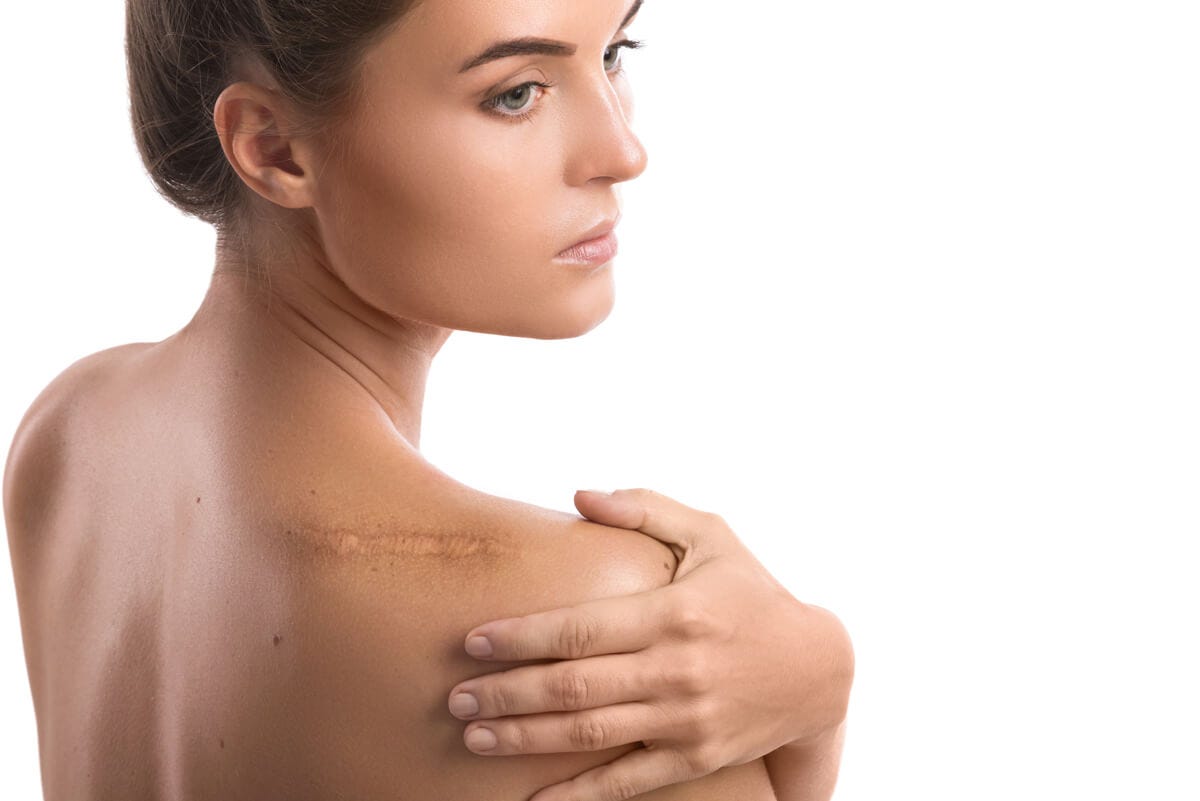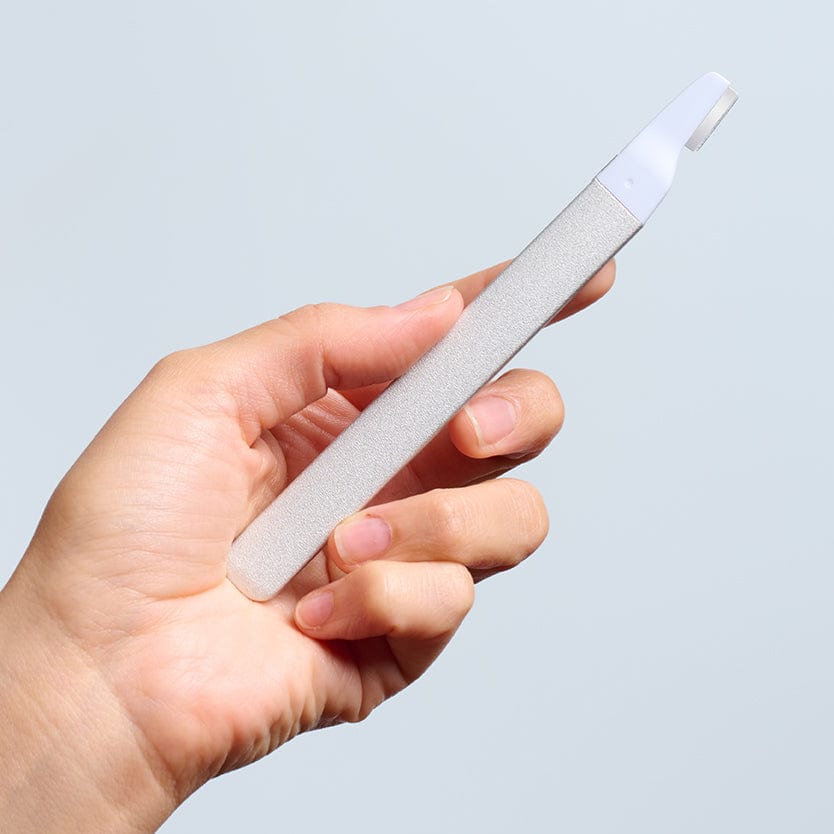Simple Tips For Hypertrophic Body Scarring
Written by Kerry Benjamin

If you have the type of skin that scars easily, even the smallest scrape on your knee or arm can leave you with a raised mark. While some people struggle with scarring on their face (check out this feature I did with Byrdie about fading acne scars if those are your concern), most people only experience this type of raised scarring on their body.
After getting a cut or scrape, scars form when your body’s primary focus is to close the wound as quickly as possible to prevent infection. In an effort to heal rapidly, your skin goes into overdrive, producing excess collagen that can cause a slightly raised scar called a hypertrophic scar. Depending on the severity of injury, your body may reabsorb some of the extra collagen over time, diminishing the raised appearance of the scar.However, most hypertrophic scars remain visible for many months or years. To speed up the fading process, there are a few simple steps you can take to keep the tissue healthy.
Please note:If you are prone to keloid scarring, where the scar tissue grows far beyond the area of the original injury, contact your dermatologist for tips. Keloid scarring is a very specific and often genetic type of scarring that requires special treatment.
Protect
The most important thing you can do to care for your scar is to regularly apply sunscreen. UV exposure can prevent the body from reabsorbing some of the excess collagen that causes the slightly raised skin texture common in hypertrophic body scarring. It can also increase inflammation in the area, making the scar larger, redder, or darker than it once was.Hydrate
Many people prone to hypertrophic scarring swear by Mederma, an over-the-counter cream that you apply as your skin heals to prevent scarring. The key to Mederma is its high concentration of silicone, which helps reduce excess collagen formation. If silicone is something you try to avoid, try shea butter or coconut oil. Both have been show to inhibit scar tissue and encourage healing. Try our Hydrating Body serum, it is super gentle and great for all sensitive skin!Massage
The friction of applying an anti-scar cream or hydrating oil to the area may help diminish a raised scar. Gently massaging a scar prevents the new collagen from becoming ropey and stiff, which makes your scar harder to treat in the long term. Of course, you should be very gentle with the area until you have fully healed to avoid infection or further injury.Exfoliate
Once your scar is completely healed, you can begin exfoliating the region regularly with at-home tools. My TCA Multi-Acid Body Peel helps increase cell turnover to speed up scar fading. You can also use a microneedling tool to help soften the scar and promote skin healing. These techniques are also especially helpful to people who experience skin darkening as well as raised scarring; exfoliation helps break up hyperpigmentation and lighten the area over time. Of course, you should only use these methods once your scar is so fully healed that it no longer has any sensitivity.Laser
If you have severe scars as a result of surgeries or serious injuries, laser therapy may be your best option for treatment. There are multiple kinds of laser treatments; your dermatologist will be able to recommend the right treatment for your scar and skin type. Check out my post on laser therapy for more information.About the Author

Kerry Benjamin, a licensed aesthetician, has over 14 years of experience. Kerry is the driving force behind StackedSkincare. As the company's CEO, Kerry has dedicated her career to revolutionizing skincare. Her innovative approach combines peels, serums, and specialized tools to effectively address a wide range of skin concerns. CA LE license number Z98459.

